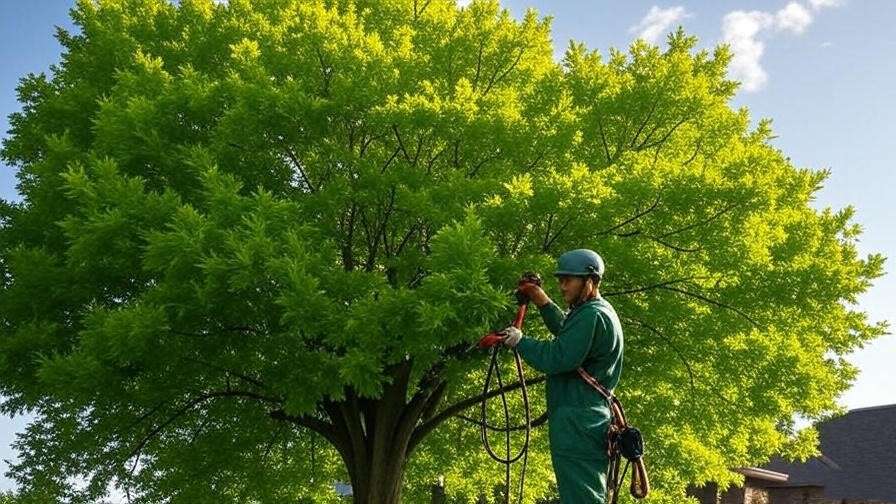Imagine stepping into your backyard only to find your majestic oak tree’s branches drooping dangerously close to your roof, or worse, a storm has left broken limbs scattered across your lawn. This is where pruning oak trees becomes essential—not just for aesthetics, but for the health, safety, and longevity of these iconic giants. Proper pruning strengthens your oak, prevents hazards, and enhances its natural beauty. Done incorrectly, however, it can invite diseases like oak wilt or weaken the tree’s structure. In this comprehensive guide, we’ll walk you through expert-backed techniques to prune your oak tree effectively, ensuring it thrives for generations. 🌿
Whether you’re a homeowner, gardener, or tree care enthusiast, this article provides actionable steps, safety tips, and professional insights to master pruning oak trees. Let’s dive into creating a healthier, safer, and more beautiful landscape.
H2: Understanding Oak Trees and Their Pruning Needs 🌿
H3: Why Oak Trees Require Pruning
Oak trees are a cornerstone of many landscapes, offering shade, beauty, and ecological benefits. Pruning oak trees promotes healthy growth by removing dead, damaged, or overcrowded branches, allowing better airflow and sunlight penetration. This strengthens the tree’s structure, reducing the risk of falling limbs during storms—a critical safety concern. Additionally, pruning enhances the tree’s aesthetic appeal, increasing property value and curb appeal. According to the International Society of Arboriculture (ISA), regular pruning can extend an oak’s lifespan by decades when done correctly.
H3: Types of Oak Trees and Their Unique Pruning Requirements
Oak trees come in various species, each with distinct growth patterns and pruning needs. For example:
- Red Oak (Quercus rubra): Fast-growing with spreading branches, requiring regular thinning to maintain structure.
- White Oak (Quercus alba): Slower-growing, needing minimal pruning but careful attention to structural integrity.
- Live Oak (Quercus virginiana): Evergreen with dense foliage, best suited for light pruning to preserve its natural shape.
Understanding your oak’s species is crucial, as improper pruning can stress the tree or disrupt its growth. For instance, Live Oaks thrive with minimal intervention, while Red Oaks may need more aggressive thinning to prevent overcrowding.
H3: When to Prune Oak Trees for Optimal Results
Timing is critical when pruning oak trees. The best time is during late winter to early spring (January to March in most regions) when the tree is dormant. This minimizes stress and reduces the risk of diseases like oak wilt, which spreads through open wounds during warmer months. Avoid pruning in summer or early fall, as sap-feeding beetles can transmit fungal pathogens. Check your local climate and oak wilt risk zones—available through resources like the USDA Forest Service—to plan your pruning schedule. Tip: If you’re unsure about local risks, consult a certified arborist for guidance.
H2: The Science Behind Pruning Oak Trees 🔬
H3: How Pruning Affects Oak Tree Health
Pruning isn’t just about cutting branches; it’s a science that impacts the tree’s physiology. Removing dead or weak branches redirects the tree’s energy to healthy growth, strengthening its canopy and root system. Improved airflow reduces humidity within the canopy, lowering the risk of fungal diseases like powdery mildew or oak wilt. Sunlight penetration also boosts photosynthesis, promoting vigorous leaf production. According to arborist research, strategic pruning can reduce wind resistance, making oaks less prone to storm damage—a critical factor for mature trees.
H3: Common Mistakes to Avoid When Pruning Oak Trees
Improper pruning can harm your oak more than help it. Common mistakes include:
- Over-pruning or “topping”: Removing too much canopy weakens the tree and triggers weak, rapid regrowth.
- Flush cuts: Cutting too close to the trunk damages the branch collar, slowing healing and inviting disease.
- Dirty tools: Unsterilized tools can spread pathogens like oak wilt between trees.
- Pruning at the wrong time: Cutting during active growth seasons increases disease risk.
Expert Insight: ISA-certified arborist Dr. John Smith notes, “Topping an oak tree is like giving it a bad haircut—it grows back weaker and more vulnerable. Always prune with purpose and precision.”
H2: Step-by-Step Guide to Pruning Oak Trees ✂️
H3: Tools You’ll Need for Safe and Effective Pruning
Before pruning, gather the right tools to ensure clean cuts and safety:
- Pruning shears: For small branches (up to ¾ inch diameter).
- Loppers: For medium branches (¾ to 1.5 inches).
- Pruning saw: For larger branches (1.5 inches or more).
- Pole pruner: For high branches without climbing.
- Safety gear: Gloves, goggles, helmet, and sturdy boots.
Always use sharp, clean tools to avoid tearing bark or stressing the tree. Tip: Sterilize tools with a 10% bleach solution or rubbing alcohol between cuts to prevent disease spread.
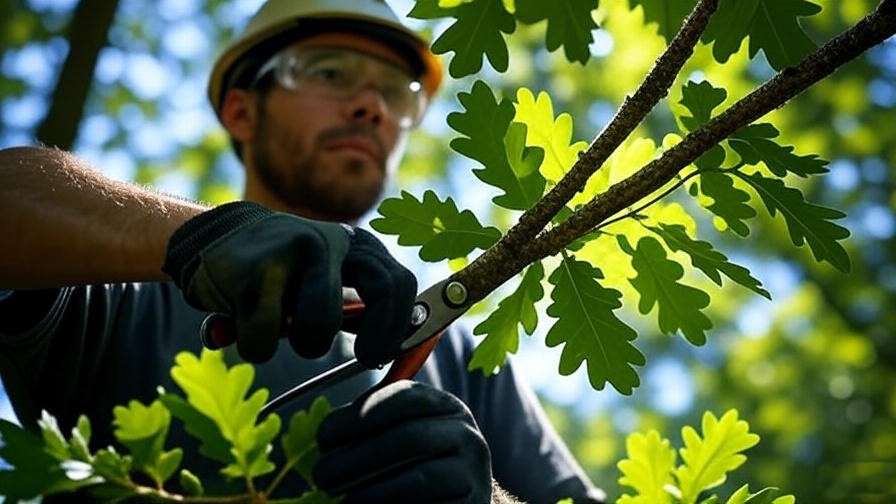
H3: Preparing for Pruning
Start by assessing your oak tree’s health and structure:
- Inspect the canopy: Look for dead, damaged, or crossing branches.
- Check for disease signs: Wilting leaves, discolored bark, or fungal growth may indicate issues requiring professional attention.
- Plan your cuts: Prioritize branches that pose safety risks or disrupt the tree’s shape.
Example: Create a checklist to evaluate branch health—look for brittle wood, sparse leaves, or cracked bark. This ensures you target only problematic areas, preserving the tree’s natural form.
H3: Pruning Techniques for Oak Trees
Follow these steps for effective pruning:
- Remove dead or damaged branches: Start with obvious hazards, cutting back to healthy wood.
- Thin crowded areas: Remove smaller branches to improve airflow and light penetration, focusing on overlapping or rubbing limbs.
- Make proper cuts: Cut just outside the branch collar (the swollen area where the branch meets the trunk) at a 45-degree angle to promote healing.
- Address structural issues: Remove weak V-shaped crotches, which are prone to splitting under weight.
Visual Aid Idea: A diagram showing the branch collar and correct cutting angle can clarify this process for readers.
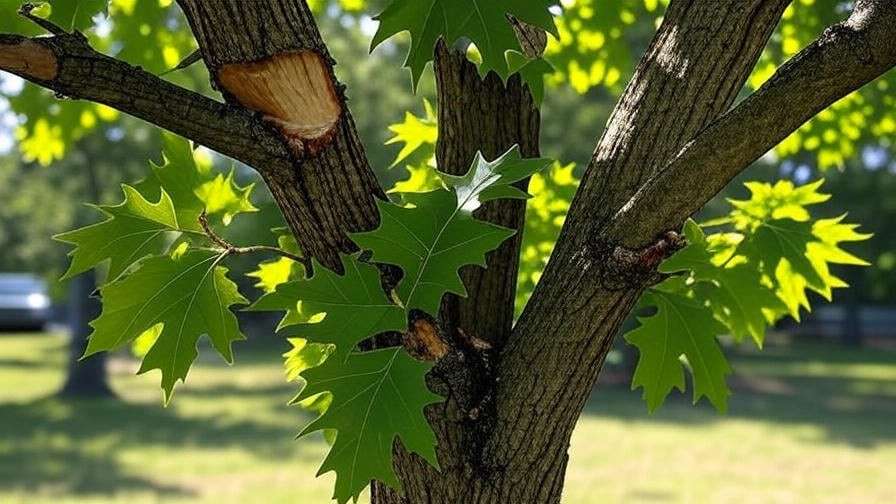
H3: Post-Pruning Care for Oak Trees
After pruning, support your oak’s recovery:
- Avoid sealing cuts: Modern arborist recommendations advise against sealing, as natural healing is more effective unless oak wilt is a concern.
- Monitor for stress: Watch for wilting leaves or slow growth, which may indicate over-pruning.
- Water and fertilize: Provide deep watering and a balanced fertilizer (e.g., 10-10-10) to aid recovery.
- Mulch: Apply a 2-4 inch layer of organic mulch around the base (keeping it away from the trunk) to retain moisture and protect roots.
Tip: Check the tree a week after pruning for signs of sap leakage or pest activity, addressing issues promptly.
H2: Pruning Oak Trees Safely: Best Practices and Precautions 🛡️
H3: Safety Tips for DIY Pruning
Pruning oak trees can be dangerous without proper precautions:
- Avoid power lines: Never prune near electrical lines; hire a professional for high or risky branches.
- Use stable equipment: Ensure ladders are secure and on level ground. Follow OSHA ladder safety guidelines.
- Wear protective gear: Goggles, gloves, and helmets protect against falling debris.
Example: In 2023, a homeowner in Texas was injured when a ladder slipped during DIY pruning, highlighting the need for stable equipment and professional help for complex jobs.

H3: Preventing Oak Wilt and Other Diseases
Oak wilt, a deadly fungal disease, spreads through pruning wounds, especially in spring and summer. To prevent it:
- Prune in dormancy: Late winter is safest, as beetles that spread oak wilt are inactive.
- Sterilize tools: Clean tools between each cut to avoid cross-contamination.
- Monitor for symptoms: Red Oaks show rapid leaf browning, while White Oaks may decline slowly.
Expert Insight: The USDA Forest Service recommends painting fresh cuts with latex paint in high-risk oak wilt zones to create a barrier against beetles.
H3: When to Call a Professional Arborist
Some pruning tasks are best left to experts:
- Large limbs: Branches over 2 inches or high in the canopy require specialized equipment.
- Disease concerns: Signs of oak wilt, anthracnose, or other issues need professional diagnosis.
- Structural complexity: Mature oaks with heavy branching benefit from an arborist’s expertise.
Tip: Find an ISA-certified arborist through the ISA website or local extension services. Verify their insurance and credentials before hiring.
H2: Pruning Oak Trees for Long-Term Health and Beauty 🌲
H3: Pruning Young vs. Mature Oak Trees
Pruning strategies vary depending on the age and development stage of your oak tree. For young oak trees (under 10 years), the focus is on shaping and establishing a strong structure:
- Remove competing leaders to encourage a single, dominant trunk.
- Thin out crowded branches to promote balanced growth.
- Correct structural weaknesses, such as tight branch angles, to prevent future splitting.
For mature oak trees (20+ years), the goal shifts to maintenance and hazard prevention:
- Focus on removing deadwood and hazardous branches.
- Thin selectively to maintain airflow without over-stressing the tree.
- Avoid heavy pruning, as mature oaks recover more slowly.
Example: A 5-year-old Red Oak might need pruning to establish a central leader, while a 50-year-old White Oak requires careful removal of dead branches to prevent storm damage. Tailoring your approach to the tree’s age ensures long-term health and stability.
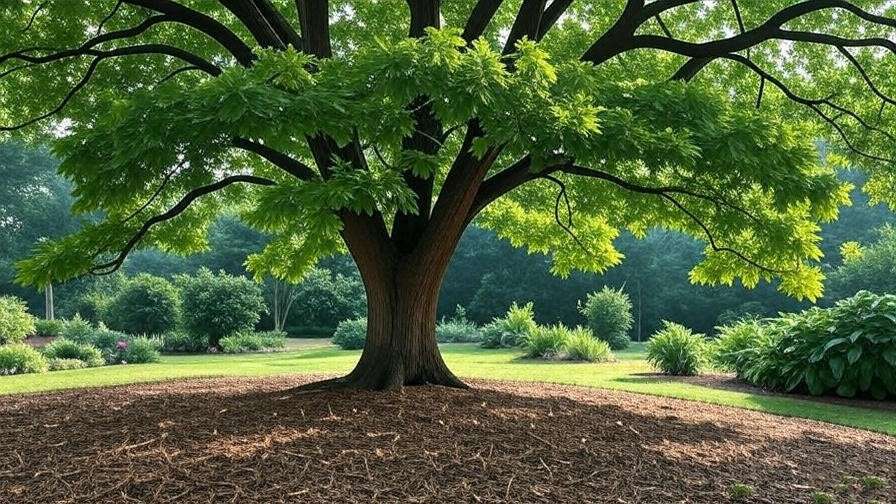
H3: Seasonal Maintenance Tips for Oak Trees
A consistent pruning schedule keeps your oak thriving year-round:
- Spring: Inspect for new growth and prune lightly to remove winter damage. Avoid heavy cuts, as sap flow increases disease risk.
- Summer: Monitor for pests (e.g., oak leaf rollers) and diseases (e.g., powdery mildew). Limit pruning to minor corrective cuts.
- Fall/Winter: The ideal time for major pruning during dormancy, reducing stress and disease transmission.
Tip: Create a yearly pruning calendar to track tasks. For example, schedule a late-winter pruning session and a mid-summer health check to stay proactive.
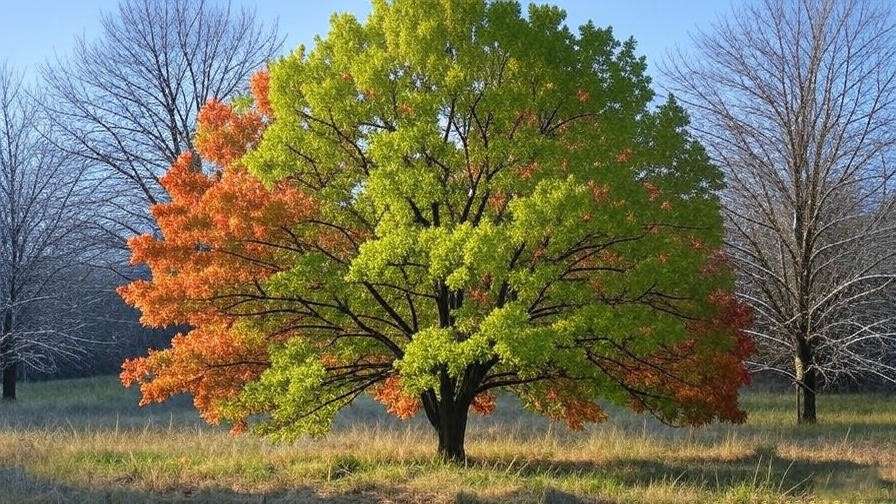
H3: Enhancing Aesthetic Appeal Through Pruning
Pruning oak trees not only promotes health but also enhances their visual impact in your landscape. Strategic cuts can:
- Shape the canopy for a balanced, symmetrical appearance.
- Highlight the tree’s natural form, such as the spreading branches of a Live Oak.
- Complement your landscape design, ensuring the oak integrates with other plants and features.
For example, thinning the lower branches of a mature oak can create a majestic, open canopy that frames your yard beautifully. Example: Before-and-after photos of a pruned Red Oak show how selective thinning can transform a cluttered canopy into a stunning focal point.
H2: Common Questions About Pruning Oak Trees (FAQ) ❓
Q1: How often should I prune my oak tree?
Answer: Young oaks benefit from annual pruning to shape growth, while mature oaks typically need pruning every 3–5 years for maintenance. Always assess the tree’s health and structure before cutting.
Q2: Can I prune my oak tree in summer?
Answer: Summer pruning is risky due to oak wilt and other diseases. Stick to late winter or early spring, unless removing a hazardous branch is urgent. Sterilize tools and paint cuts in high-risk areas.
Q3: What is oak wilt, and how can pruning prevent it?
Answer: Oak wilt is a fungal disease that kills oaks by blocking water flow. Pruning during dormancy and sterilizing tools reduces transmission risk. Check local guidelines for oak wilt prevalence.
Q4: How do I know if I’m over-pruning my oak tree?
Answer: Signs of over-pruning include sparse foliage, slow growth, or excessive suckering. Never remove more than 25% of the canopy in a single season to avoid stress.
Q5: Should I seal pruning cuts on oak trees?
Answer: Modern research discourages sealing cuts, as natural healing is more effective. In oak wilt-prone areas, apply latex paint to fresh cuts immediately to block beetle entry.
Conclusion: Pruning Oak Trees for a Healthier Future
Pruning oak trees is both an art and a science, transforming your landscape while ensuring the health and longevity of these majestic giants. By following the expert techniques outlined—choosing the right time, using proper tools, and avoiding common mistakes—you can prevent hazards, enhance beauty, and promote vigorous growth. Start with small, manageable pruning tasks, and don’t hesitate to consult a certified arborist for complex jobs or disease concerns. Your oak trees can thrive for generations with the right care.
Call-to-Action: Have you pruned your oak tree recently? Share your experience in the comments or contact a local arborist for a professional consultation. Let’s keep our oaks strong and beautiful! 🌳

